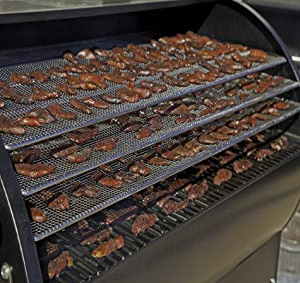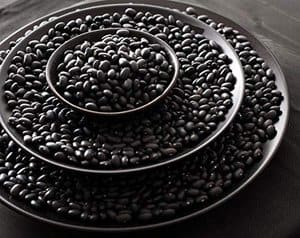
Find out what the best survival foods to stockpile are so that you are ready for the collapse.
When a major disaster occurs, chaos ensues. Stock market crash, social unrest, and food shortages are just the tip of the iceberg. Are you prepared? Do you have stockpiles of emergency food ready to go? Will you and your family last through the chaos, or be devoured by it?
What are the best survival foods to stockpile for an emergency of this level? What do you need to grab now before it’s too late and before chaos erupts — and while you still have access to money…
What makes the best survival foods for an emergency food supply?
Any number of catastrophic disasters could occur. A hurricane that wipes out the shoreline and devastates communities several miles inland. Or a super-typhoon that strikes an island nation, turning life upside down for cities and neighborhoods.It could even be a terrorist attack with a WMD or a global pandemic (which we’re all familiar with now) interrupting transportation and shipping for several weeks or months, resulting in widespread food shortages.
It’s clear in recent years that a massive disaster can strike any time and just about anywhere. Whether it’s a man made catastrophe or an unprecedented natural disaster, you should start preparing by stocking up on the best emergency foods so you’re ready for anything.
Non-Perishable Foods Make the Best Survival Food
In the heat of the moment, or several weeks in advance, you’re going to want foods that help you meet nutritional needs, that have a high calorie count, and of course foods likely to disappear first off store shelves.
There Are Survival Food Kits To Help Give You a Headstart on Your Stockpile
If you want to get a head start on building up your stockpile, there are some excellent survival food kits out there that can help you do that. None of us know when disaster will strike, and you’ll be kicking yourself if you had plans to build a stockpile but started too late. That’s where these emergency food kits come in. Most of them have 25-30 years of shelf life and include a pretty good variety of flavors. Now, granted – with these emergency food kits, you’ll be paying more per calorie/per meal than if you build your own stockpile. But if you’re looking to get a headstart because you feel like something catastrophic could happen at any time, then it might be a good idea to pick up one of these food kits ASAP so at least you have the beginnings of a longer term emergency food supply.

We have an entire article dedicated to the best survival food kits out there, but for your convenience we’ve also included the top three that we recommend. If you want to get ahead of the game and get your hands on a decent stockpile immediately, getting one of these freeze dried food kits is the way to go. Companies like Mountain House and Augason Farms provide freeze dried food kits that cost more per calorie – but they are pre-made meals that provide very long shelf lives (25-30 years).
Weight And Packaging May Be A Factor
Which foods can you grab the most of, and get the most out of? It’s important to consider calorie count, ease of use / preparation, shelf-life, and even “weight” factored in. Why is weight a factor? What if you and your family have to evacuate an area on foot, and with nothing but backpacks and or suitcases? You’ll regret having stocked up on so much canned food when you realize just how much those cans weigh. The best survival food balances weight against nutritional and caloric value. This is something you should pay particular attention to if you also plan on having survival gear with you.
Canned goods are heavy and not portable – which means that when push comes to shove, it will be difficult to travel with a large amount of it. Canned food should be a part of your emergency food supply though — it can be the food that helps you get by the first few weeks, as long as you don’t have to evacuate or travel (particularly on foot). If you have canned food, you should also have a multi tool with you (rather than a can opener). A can opener is a single use tool – and generally you want to avoid those. A good stockpile of emergency food should combine both dry, freeze-dried/dehydrated, and canned goods.
With that said, the first recommended survival food is…
The Top 10 Best Survival Foods
1.) Canned Alaskan Wild Salmon

Canned Alaskan Wild Salmon is rich in protein and healthy fats like omega 3s. Look for “Alaskan Wild Salmon” and you’re likely to get salmon with minimal or no environmental contaminants that can sometimes show up in other canned fish from other parts of the world. Salmon may not be your thing today but realize the Inuit people (native people of Alaska and northern Canada) on a traditional diet are known for low rates of heart attack and stroke, which is attributed to their long term, continuous diet of fish. Like tuna fish, you can eat canned Alaskan wild salmon right out of the can, without cooking — though, if you have leftovers, it will have to be refrigerated where it will then keep for the next 3 – 4 days. If refrigeration isn’t an option, plan to share one can of salmon with 2-3 other people at a time, so nothing goes to waste. Thanks to it’s long shelf life and great protein content, it’s on the top of our list when it comes to the best survival foods. Plus, fish is generally healthier than meat (particularly canned meat). It tastes good too!
2.) Brown Rice

Brown Rice is high in calories and protein, as well as essential vitamins and minerals like iron. As a dry, non-perishable food, brown rice also has a long shelf life making it a great emergency food. Brown rice has one problem though: Typically, it must be boiled for several minutes (30 minutes or longer — even up to 1 hour with some brands). During a long term emergency where no electricity is available, the last thing you want to do is use precious fuel to cook food for this length of time; whether that’s on a propane, butane, or wood burning stove. So, for an extended survival emergency, where you are stocking up your pantry, “brown rice hot cereal” is potentially better choice because it cooks in just 5 – 8 minutes and is still packed with nutrients and high in calories (one cup of brown rice hot cereal provides 600 calories, 12 grams of protein, and 16% daily value for iron and is easily rationed out in to smaller portions).
A note about grain storage: Storing brown rice, and other grains, in a cool, dry place in large airtight containers is important to maintain freshness. Store bought brands of brown rice and brown rice cereal may only have a shelf life of 3 – 6 months however. So, you will want a plan in place to cycle your brown rice cereal every 3 months so that it’s eaten in your home (makes an easy, healthy breakfast and is an alternative to sugar packed cereals).
Long term storage: Because of it’s 3 month shelf life, if you would prefer not to cycle your brown rice cereal, a better investment when it comes to brown rice for long term storage is to go with a freeze dried version from Wise Company or even Mountain House (with these companies you’re not limited to just brown rice).
Learn Techniques To Make these Best Survival Foods Items Last Years
With that said, you can use the same techniques to store specific non perishable foods that big name food storage companies use like Wise Company and Mountain House use. You can do it cheaper (saving yourself quite a bit of money on long term survival food), which means you can afford to purchase a lot more food in bulk.
You’ll need specific food storage supplies (foil pouches and oxygen absorption packets) and 5 gallon airtight buckets which would be used as outer containers, storing several foil pouches of food at a time. We go into much more detail about freeze drying food for storage in our article about the Best Emergency Food Methods – these methods will allow you to achieve amazing shelf life for a wide variety of foods (we’re talking 10 – 25 years of shelf life). If you want to be ready for a genuine long term catastrophe, it would make a lot of sense to learn these freeze drying techniques. Many of the best emergency foods on this list can be preserved using the methods mentioned in the article about emergency food storage methods.
3.) Dried Beans

Kidney beans, black beans, garbanzo beans, lima beans, pinto beans, and others are all high in calories, contain a fair amount of protein per serving, and also several essential vitamins and minerals. Dried beans come in packages larger than canned beans but for the amount you get weigh quite a bit less. The key difference is that you have to add water and let most beans soak for several hours before eating. Split peas, for example, have a much shorter soak time. Split peas are part of the dried bean family with many of the same vitamins and minerals. Finally, dried beans have a long shelf life. Dried beans will stay good in the back of your car, your office survival kit, and of course your pantry of survival foods at your home or cabin.
Concerned about having to feed a few other mouths during a time of disaster? A large supply of dried beans is relatively inexpensive for how many people you can feed and can go a long way and a great food to carry in a backpack, compared to canned beans that you are better off leaving behind. Canned beans cost a lot more, weigh a lot more per calorie (because they’re soaked in liquid as opposed to dried), and generally taste worst. The only benefit to canned beans (and canned goods in general) is convenience and shelf life, and with dried beans, shelf life isn’t an issue.
4.) Bulk Nuts

Look for the bulk seed/nut area of your grocery store, and specifically for unsalted, and unshelled (if possible). You want to choose survival foods not high in salt, as too much salt will make you thirsty and isn’t good for overall health. Peanuts, almonds, sunflower seeds, and a number of other nuts / seeds typically sold in supermarket bulk foods section are high in essential vitamins and minerals, essential fatty acids, and have a fair amount of protein. They’re also conveniently light-weight and a serving size of bulk unsalted nuts may be as small as a 1/4 cup, so you’ll get many servings out of a large bag.
At the same time, invest in air-tight food storage containers, such as plastic bins or glass jars. You can extend storage life by then storing these in the refrigerator, though most bulk dry emergency foods will store up to a few months (be sure to check expiration dates), if kept in a cool, dark, place away from sunlight.
5.) Peanut Butter
It’s packed with protein and essential fatty acids, as well as contains many essential vitamins and minerals (such as copper and iron). For the best health, choose “natural” brands like Skippy Natural Peanut Butter (Skippy offers the best price I can find for buying in bulk off places like Amazon). Just a couple tablespoons a day of peanut butter can help a person survive a period of limited food intake (during a disaster, one of your strategies to survive needs to include an understanding that it’s time to cut calories — most people eat a lot more calories each day than they actually need to survive. Cutting calories means your food will last longer, at the same time helping you lose excess weight, making potential evacuation on foot at some point easier than if you’re carrying around extra pounds).
6.) Trail Mix

A favorite of hikers, trail mix has a variety of ingredients, raisins, peanuts and other nuts, and often pieces of chocolate, and sometimes dried fruit and berries. The simple sugars in the raisins, chocolate and dried fruits can be a quick mood booster and source of short term energy. Trail mix is a way to include dried fruits in your survival diet plan. While this might not seem like a great option as an emergency food for if you’re bugging-in, if you’re in a wilderness survival situation or you’re bugging out (especially if you’re bugging out on foot) you’ll need the extra energy boost that trail mix provides over plain nuts. We’re trying to cover all grounds here, and trail mix is the type of survival food you need when you’re expending a lot of energy escaping disaster on foot or hiking through the wilderness.
7.) Energy Bars and Chocolate Bars
There’s an energy bar nowadays for every taste. Look for brands with a high calorie count as well as plenty of protein and a wide range of nutrients. Chocolate bars – Chocolate can be a quick source of energy and a great morale booster, while also being generous in calories. (Chocolate is also likely to become a commodity in demand in the weeks and months following a disaster.) Again, this is one of those foods that might not make sense to you if you anticipate you’ll be “bugging-in” or bugging out in a vehicle. But if your survival depends on you fleeing on foot, that’s where things like energy bars and chocolate bars come into play.
8.) Beef Jerky

“Natural” brands of beef, turkey, etc. jerky do not contain any or as much of the harmful added ingredients seen in many commercial jerky brands. What is jerky? Jerky is a tasty form of dried meat. Dried meat, if you remember, is a long time proven survival food used by Native Americans and American pioneers alike, and also used by primitive tribes around the world. While these primitive tribes use smoking and sun drying methods to create “jerky”, today commercial methods of drying meat do this on a much larger scale. You have two choices: One is to buy the smaller serving packages, or to purchase your dried meat in bulk and have it shipped to you directly.
You can also opt for canned meat, but canned meat is less portable than jerky. We’ve tried to limit the recommendations of canned food in this list because while things like canned meat have long shelf lives, they’re only good in survival situations where you’re hunkering down at home. If you have to escape a disaster on foot, good luck carrying a bunch of canned meat around in your backpack.
9.) Coffee / Instant Coffee
Have you ever tried to quit drinking coffee, after years of counting on it to get you up in the morning and through the day? If not you, someone in your party is likely to consider coffee (or simply caffeine) an essential, and may be tired, lethargic, and have headaches without the stuff.
Coffee doesn’t have to be a top priority, but being able to grab it will be something more than one person in your party is likely to be thankful for. It’s a quick mood booster and good for morale. And it’s also something that could be traded like a commodity during a crises situation. You might also consider some powdered milk to go along with your coffee – while obviously this isn’t strictly necessarily, powdered milk weighs next to nothing and in a survival situation, a cup of Joe with milk might be the kind of luxury that keeps you sane.
10.) Sea vegetables / Powdered Super Greens
A popular item selling in health foods stores today are the sea vegetables that come in powdered form, or pill. In a time of catastrophic disaster, most communities are going to be hurting for fresh produce. Sea vegetables are a super food, packed with vitamins and nutrients and health benefits that help boost immunity, provide tissue repair and wound healing, and can even have anti-fungal and anti-bacterial properties. They can also be dried and turn into a powder (hence ‘powdered super greens’). What this means is that sea vegetables like kelp and chlorella and others are super foods. Though I list sea vegetables as number ten, they should probably be the number 1 survival food on this top ten list. The reason again is that fresh produce is likely to be in short supply or disappear completely in several areas, in a widespread emergency.
As a bottled supplement, these can go a long way to provide essential vitamins and minerals, and an assortment of beneficial health properties, in a time of emergency. So, it is the powdered supplement with a long-term shelf-life that I recommend as a key survival food.
Even the Best Survival Foods Can Go Off
Note, many non-perishable foods such as several listed here don’t have a long shelf life, usually just several months. You’ll want to have a system in place in order to “cycle” your non-perishable food before it expires: When non-perishable food nears it’s expiration date, either eat it or even donate it to a local food bank (food banks usually give food away within a short time of receiving a donation). Then, once again purchase fresh non-perishable food and add it to your emergency food stores. With a system like this in place, you’ll have a continual supply of fresh non-perishable foods. That way, if a catastrophic disaster strikes, you’ll have a variety of non-perishable foods for at least the first few months following the disaster and you or your family won’t have to rely solely on freeze dried food, as so many people are stocking up on today.
Special Coronavirus update note:
We just found a few freeze dried survival food options still available on Amazon (most are sold out and we have no idea how long these will remain in stock)… Here they are:

Alternatively, learn a new skill and make some long lasting survival food yourself Learn how to make your own long-lasting survival food
Or go a step further and start planning your own food supply by growing a survival farm. Find out how to grow your own survival farm
Just Because You’ve Stocked Up Doesn’t Mean You’re Prepared
Even if you’ve got a good stockpile of food going and you’re cycling as needed to keep your emergency stores edible, that doesn’t mean you’re ready for a true disaster. Having everything stored up and ready at home is great, but what if you’re away from home when a true survival scenario occurs? All your preparation and stockpiling means nothing if you don’t have access to it. That’s why you need to also have a get home bag. A get home bag is exactly what it sounds like – it’s a backpack with some emergency supplies that should be enough to get you home safely in the event of something catastrophic or dangerous happening.
Your get home bag should (as much as possible) go where you go. That means keeping it in the trunk of your car when you go to work, taking it with you if you go on a trip, etc. The get home bag is the bridge that will get you from wherever you are when disaster strikes to the safety of your home where you’ve already prepared emergency supplies and survival tools and equipment. If you don’t have a suitable survival backpack to put together your get home bag, make sure you read our guide on the best survival backpacks and pick one of the top choices.
Caution About “Food Fatigue”
When preparing for an emergency, you should also strongly consider bulk freeze-dried emergency foods that have a shelf life of several years. Please note that it is not wise to only purchase freeze-dried food though. The reason is food fatigue.
Can you imagine what it would be like to eat freeze dried food, day after day, month after month, in a time of extended disaster? Not only can packaged, processed foods be harder on a person’s health (due to food additives and preservatives, high cholesterol, sodium, etc., in some freeze dried products), but it may also get very, very boring in time.
In a time of extended disaster, trust me — having a bag of M&Ms;, smoked beef jerky, or even a soda from time to time can be a big boost to morale, especially if you have children. With that said, do not overlook the value in having bulk freeze dried food stocked up in your pantry, especially if you would like to help neighbors and other family members who have failed to prepare. Leading producers like Wise Company (with its Entry Variety Pack) and Mountain House (with its Classic Bucket) factor in food fatigue and include variety deliberately, and as such they come with many flavorful choices for you and your family.
Fresh Cuts Of Meat Aren’t the Best Survival Food… But
One final thing to comment on here: People stocking up on the best survival foods might skip the meat aisle altogether, believing that cuts of meat will go bad quickly in an emergency.
But what if you know how to salt and smoke meat, to preserve it for long term storage minus refrigeration or freezing? You can make these cuts of meat last several months, and possibly several years.
What do you have in your freezer at home right now?
If the electricity fails to your community, a blackout lasting several weeks or more, as these cuts of meat thaw, have a system in place (right in your own backyard), where you can salt and smoke each cut of meat. Build yourself a backyard smoker. This is how early Native Americans commonly prepared meat for long term storage. So, consider this a “Plan B” for your frozen meat in the event of a power outage, where the power is down for good.
We have a guide on drying and smoking meat that might be of interest if you want to learn how to preserve meat for your stores.
Prepping Often Calls For Moving And Relocation — More Than Just Survival Foods
A bit off topic here, but if you’re new to prepping, survival foods is only the first step to a thorough plan for surviving a catastrophic disaster, with the greatest risk being to those who live in or near major cities. If there is ever a disruption in the food supply, major cities will suffer the hardest and first due to the insanely high number of people who need food and water (into the millions in certain cities). If you have a decent stockpile, you’ll want to be aware of the potential enemies of your doomsday stockpile.
Can You Rent Or Buy A Home Elsewhere?
Before “it all hits the fan”, take a close look at moving and relocation beforehand. And don’t just look at rural states or regions with farming and good water, subjects which are commonly brought up among preppers when discussing possible relocation. Consider coastal areas such as the north Puget Sound for a possible home, including a remote island (170 islands total) in or near the San Juan Island chain (U.S.) and on up the coast of British Columbia, Canada and even Alaska (if you’re capable of life in harsh Alaska conditions during the winter months).
On the East Coast, the places to look at could be Maine (near the coast) on up into Newfoundland.
In this regard, even better than canned salmon is actual salmon from the ocean and or rivers, and even fish like Halibut and crab or lobster. Keep in mind at some point that canned fish is going to run out.
Food Shortages Provide Opportunity To Put Faith In Action
How we treat others in times of conflict can show what kind of character we have deep down. Do we become animals or do we rise up and become men and women of honor, willing to share our supplies with others in times of need, especially the children, the elderly, the sick and disabled and poor among us?
You’re on a website that has writers who write about the “last days” and of course we’re going to mention here that a food shortage in a community can be a great opportunity for God to increase your faith, as you trust in him to provide for you, even as you share your food stores with others.
The man or woman of God living a Christian life is put in a hard situation, when he or she has to choose between sharing food with others, during a time of crises, or storing it away. The Bible says that God is a rewarder of the faithful, and that God also provides for his people in times of need. The idea is to live without fear, knowing that God will provide what you and your family need for each day. He fed the Israelites with manna and quail. He brought streams of water up from the rocks.
So our personal survival tip is to share your food as God would lead you (once you’ve put your faith in Christ and have made the decision to live according to God’s Word), and trust that even if you’ve given your last bite to eat that He already has the next day written and plans to bring provision perhaps greater than the stores you just gave away.
Even if you’re not religious, if you’re ever in the situation to help your community out during a time of need and crisis by providing food and other supplies, you should seriously consider it. No man is an island, and religious or not, kindness and generosity is what brings communities together, especially when times are hard. If you’ve stocked up on some of the best survival food items we’ve mentioned here today, then you’re well prepared for any eventuality. Others around you may not be, and a little generosity could save lives.

Books can be your best pre-collapse investment.
Carnivore’s Bible (is a wellknown meat processor providing custom meat processing services locally andacross the state of Montana and more. Whether your needs are for domestic meator wild game meat processing)
The Lost Book of Remedies PDF ( contains a series of medicinal andherbal recipes to make home made remedies from medicinal plants and herbs.Chromic diseases and maladies can be overcome by taking the remediesoutlined in this book. The writer claims that his grandfather was taughtherbalism and healing whilst in active service during world war twoand that he has treated many soldiers with his home made cures. )
Easy Cellar(Info about building and managing your root cellar, plus printable plans. The book on building and using root cellars – The Complete Root Cellar Book.)
The Lost Ways (Learn the long forgotten secrets that helped our forefathers survive famines,wars,economic crisis and anything else life threw at them)
LOST WAYS 2 ( Wordof the day: Prepare! And do it the old fashion way, like our fore-fathers did it and succeed longbefore us,because what lies ahead of us will require all the help we can get. Watch this video and learn the 3 skills that ensured our ancestors survival in hard times offamine and war.)
Survival MD (Best Post Collapse First Aid Survival Guide Ever)
Conquering the coming collapse (Financial advice and preparedness )
Liberty Generator (Build and make your own energy source)
Backyard Liberty (Easy and cheap DIY Aquaponic system to grow your organic and living food bank)
Bullet Proof Home (A Prepper’s Guide in Safeguarding a Home )
Family Self Defense (Best Self Defense Strategies For You And Your Family)
Survive Any Crisis (Best Items To Hoard For A Long Term Crisis)
Survive The End Days(Biggest Cover Up Of Our President)
Drought USA(Discover The Amazing Device That Turns Air Into Water)

